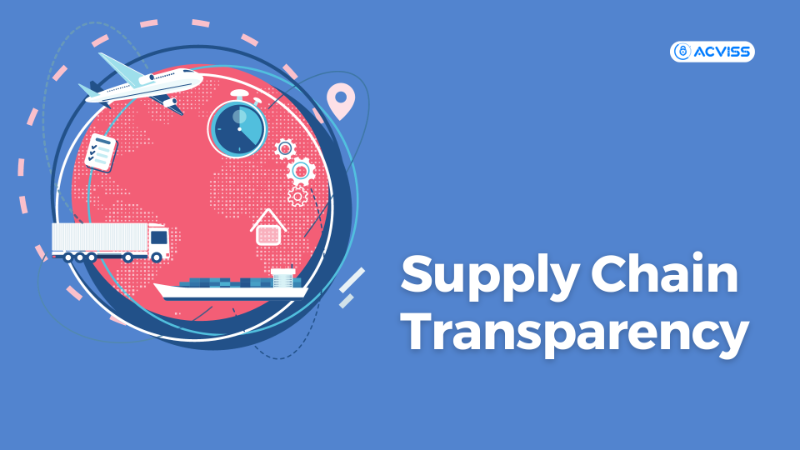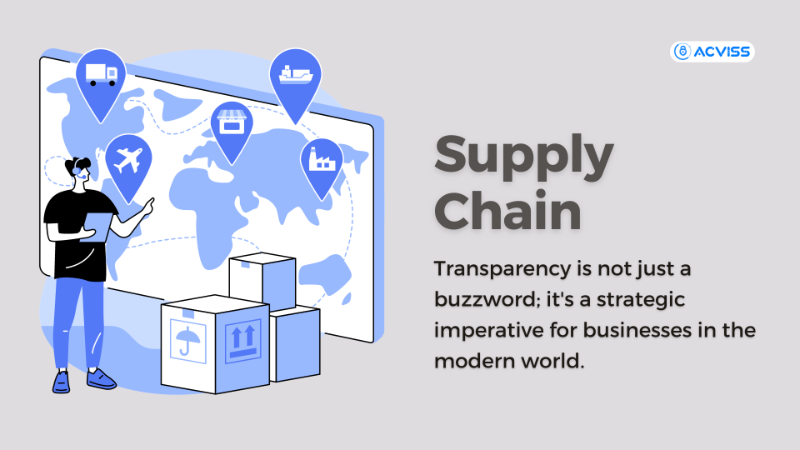How Supply Chain Transparency Can Elevate Your Brand!

The supply chain is the lifeblood of any business, no matter the brand or industry. The intricate networks that connect manufacturers, suppliers, distributors and consumers across the world, facilitate the flow of goods and services.
The global supply chain management market is estimated to hit $45.2 billion in 2027.
However, this is not immune to corruption and fraud, posing a significant threat to brands and the global economy as a whole.
What is Supply Chain Fraud?
Supply chain fraud includes a range of deceptive practices carried out within the distribution ecosystem. It involves dishonesty, deceit and manipulation at various stages of the supply chain process which paves the ground for counterfeiting, pilferage and theft of authentic products.
The Vulnerable Points in the Supply Chain
To understand supply chain fraud, it's essential to identify the vulnerabilities within the supply chain where tampering is most likely to occur. These points include procurement, transportation, distribution and inventory management. Counterfeiters or fraudsters often exploit them due to their complexity and the involvement of multiple parties.
The Consequences
Financial Losses
One of the most immediate and tangible consequences of supply chain fraud is financial loss, which results in inflated costs, revenue leakage and even bankruptcy for your brand.
Reputational Damage
Beyond financial losses, it also tarnishes brand reputation. When customers, partners and stakeholders discover that your brand has been subjected to counterfeiting or fraud, trust is eroded and long-term damage is done to the brand.
Legal Consequences
Supply chain frauds and the legal repercussions following them can be tedious for your brand, which will require a full-fledged legal team and a fortune to run.
Supply Chain Disruptions
To maintain a steady stand in the market, a normal flow of goods and services within the supply chain is necessary for you. The disruption caused by fraud leads to delays, and shortages and ultimately impacts a company's ability to meet customer demand.

Why Supply Chain Frauds Happen?
1. Lack of Transparency
The primary cause of supply chain fraud is the limited visibility into the activities and transactions occurring at different stages, which makes it easier for fraud to go undetected. Only 6% of the companies claim to have full supply chain visibility.
2. Complex Supply Chains
Modern supply chains are incredibly complex, with multiple players, geographies and systems involved, creating opportunities for fraudsters to exploit gaps in oversight and control.
3. Pressure to Cut Costs
Businesses are under constant pressure to reduce costs and improve efficiency. In some cases, this pressure leads to unethical cost-cutting measures that open the door to fraud.
4. Lack of due diligence
Failure to supervise suppliers and partners can make your business vulnerable to fraud. Without proper vetting, companies may unknowingly enter into relationships with entities that can do more harm than good.
The Importance of Transparency in Supply Chain
The practice of making information about the various stages of the supply chain visible and accessible to relevant stakeholders should be a priority. This includes sharing data on suppliers, processes, transactions and product origins. Why?
1. Detecting and Preventing Fraud
Transparency helps in detecting and preventing supply chain fraud. When all relevant information is readily available, it becomes easier for you to spot irregularities, inconsistencies and suspicious activities.
Nike allows users to find out where their products come from. They map their supply chain and provide insight into the whereabouts of the product.
2. Building Trust
The cornerstone of building trust in supply chain relationships is transparency. When businesses are open and honest about their practices and transactions, they establish credibility with customers, partners and regulators.
3. Ethical and Sustainable Practices
Customers and brands have prioritised ethical and sustainable practices in business. This also allows stakeholders to assess the environmental and social impact of supply chain operations, promoting responsible business conduct.
A prime example is Nestlé. They have implemented a comprehensive responsible sourcing program that focuses on transparency and sustainability in its supply chain. And they disclose information about their supplier relationships and progress toward ethical sourcing goals.
4. Employee Welfare
Supply chain transparency can in fact reduce employee turnover. Often people prefer to work in a business environment that takes initiative for the betterment of society.
Patagonia, an outdoor recreation clothing brand has stated that their employee turnover has become less than 4% since the enhancement of supply chain management.
How Can Your Brand improve transparency in the Supply Chain?
1. Supply Chain Mapping
One of the key strategies for achieving transparency is supply chain mapping. This involves creating a detailed visual representation of the entire supply chain, including all components, suppliers and processes.
2. Track and Trace Technologies
The use of digital technologies such as Blockchain and Artificial Intelligence will enhance transparency by providing real-time data and tracking capabilities.
Origin is one such solution that utilises Blockchain that allows you to closely monitor the movement of your product and pinpoint the exact location where the product is getting tampered with. Added with the anti-counterfeiting solutions, Origin will also be the answer to all your counterfeit headaches.
3. Supplier Audits and Due Diligence
Regular supplier audits and due diligence are crucial for assessing the integrity of suppliers and identifying potential risks or fraud.
4. Regulatory Compliance
Compliance with relevant regulations and industry standards can promote transparency by requiring businesses to disclose certain information about their supply chain practices.
Is It Impossible to Achieve Transparency?
No, but your brand may face certain challenges!
1. Data Privacy Concerns
Balancing transparency with data privacy is challenging, especially in industries with sensitive information. Your brand must put extra care into navigating through this delicate balance to protect both your interests and consumer privacy.
2. Resistance to Change
Implementing transparency initiatives often requires significant organizational changes. Resistance from your employees, suppliers or other stakeholders may hinder the progress.
3. Cost and Resource Constraints
Achieving transparency may require investments in technology, training and processes. Smaller businesses may struggle to allocate resources to these initiatives. Evaluate your budget and requirements before you jump into anything.
4. Complex Supply Chains
As mentioned earlier, complex supply chains pose a significant challenge to achieving transparency. Untangling the web of interconnections can be daunting.
Make Transparency the Norm!
1. Collaboration and Industry Standards
Start with collaboration among industry players. Establishing industry-wide standards and best practices can create a level playing field and drive adoption.
2. Education and Awareness
Campaigns for education and awareness can help businesses and consumers understand the value of transparency and its role in combating supply chain fraud.
3. Regulatory Support
All these efforts mean nothing without government support. Policymakers must encourage businesses to adopt transparent practices through legislation and tax incentives.
4. Technology Advancements
Continued advancements in technology, particularly in areas like blockchain and data analytics, will make it easier for businesses to achieve transparency in their supply chains.
Ultimately, transparency is not just a buzzword; it's a strategic imperative for businesses in the modern world.
If you desire to be the brand that wants to make a change, never forget to get in touch with us, because we are here to create a world that is safe for brands to grow. Acviss has protected over 2 Billion products across the globe and we assure you that your brand is a priority for us.
